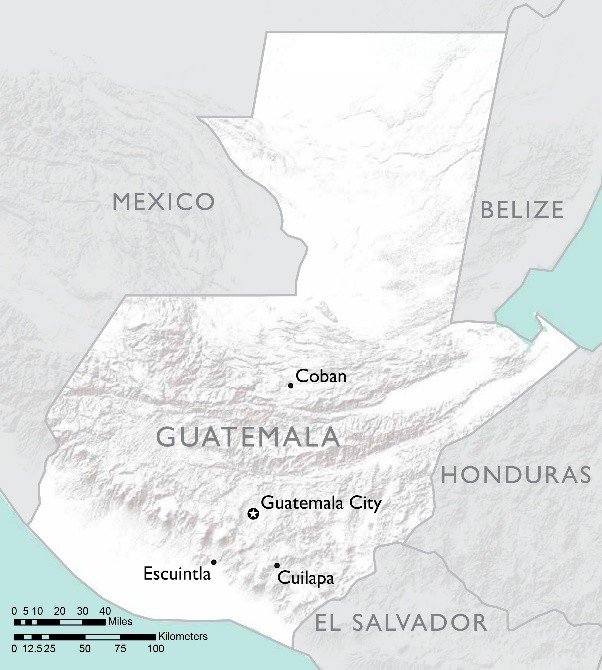- What We Do
- Agriculture and Food Security
- Democracy, Human Rights and Governance
- Economic Growth and Trade
- Education
- Ending Extreme Poverty
- Environment and Global Climate Change
- Gender Equality and Women's Empowerment
- Global Health
- Water and Sanitation
- Working in Crises and Conflict
- U.S. Global Development Lab

Situation
-
Guatemala has the fourth-highest rate of chronic malnutrition in the world and the highest in Latin America and the Caribbean. Currently, approximately 50 percent of children under five are stunted due to chronic food insecurity. Within indigenous areas, nearly 70 percent of the population is chronically malnourished.
-
Four years of consecutive drought in Central America’s Dry Corridor—a region that encompasses a large portion of southern Guatemala—have exacerbated food insecurity among poor households. Over the past several years, Guatemala has suffered from consecutive poor harvests, which have led to limited agricultural production, lost labor opportunities and reduced household incomes, making it more difficult for vulnerable families to access enough nutritious food.
- The Famine Early Warning Systems Network (FEWS NET) anticipates average food crop production during the August-to-September harvest season, which is expected to result in a decline in staple food prices and an increase in the availability of agricultural employment opportunities. As a result, FEWS NET predicts that food security levels will improve from Crisis (IPC 3)* to Stressed (IPC 2) across southern Guatemala through January. However, the households most affected by consecutive years of low agricultural production are expected to continue to face crisis levels of food insecurity over the same period.
*The Integrated Phase Classification (IPC) is a standardized tool that aims to classify the severity and magnitude of food insecurity. The IPC scale, which is comparable across countries, ranges from Minimal (IPC 1) to Famine (IPC 5).
Response
- In response to the drought crisis, USAID Office of Food for Peace (FFP) supports the UN World Food Program and NGOs to provide food assistance to vulnerable households throughout the Dry Corridor. In an effort to reduce food and nutrition insecurity and mitigate impacts of the drought, FFP provides assistance in the form of cash transfers for food, food vouchers, cash-for-training and cash-for-assets programs.
- FFP also supports two ongoing, multi-year development programs that empower communities to build food security and resilience to shocks. These programs—implemented in partnership with Catholic Relief Services and Save the Children—aim to improve maternal and child health, and increase household access to food. In particular, programs focus on training communities to better manage natural resources and boost access to agricultural and non-agricultural livelihoods opportunities and financial services.
Food for Peace Contributions
Total Contributions:
| U.S. Dollars | Metric Tons | |
|---|---|---|
| Fiscal Year 2017 | $30.1 million | --- |
| Fiscal Year 2016 | $27.4 million | 1,030 MT |
| Fiscal Year 2015 | $19.0 million | 5,880 MT |
FY 2017 contribution on funds provided to date
Additional Information
- Guatemala Baseline Study Report
- Success Story: Home Gardens improve nutrition, empower women in Guatemala
- Learn more about how USAID and Save the Children are working together to tackle hunger in Guatemala: Getting to the Root of Malnutrition in Guatemala
- Feed the Future in Guatemala







Comment
Make a general inquiry or suggest an improvement.